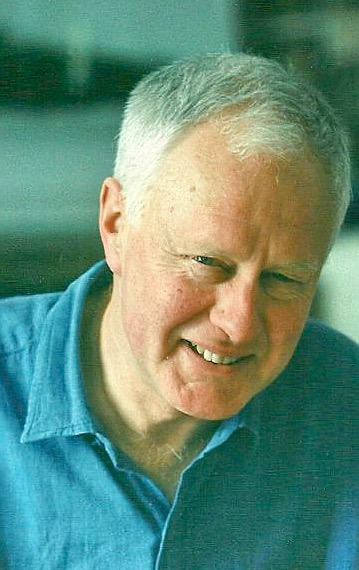Drawing on Connecticut’s Historic Canvas: Architect Roger S. Clarke
Four years ago, the Watkinson Library at Trinity College received a collection of working drawings, prints, photographs, project files, and the library of Roger S. Clarke, an architect who worked on many notable Connecticut buildings during his time in the state from 1972 until his death in 2011. Now, the nearly 25 cubic feet of the Papers of Roger S. Clarke have been carefully processed and are made available for the general public and researchers in the John M.K. Davis Reading Room at Trinity College’s Watkinson Library.
Born on January 31, 1936, in Castleford, England, Clarke drew buildings in pencil as a young boy and excelled in art at school. He received a degree in Architecture from Liverpool University, after apprenticing in Germany for a year. He worked in London for several years and then moved to the United States to experience American architecture first hand, particularly to see the buildings of Frank Lloyd Wright. He soon settled in New York City where he was employed at Skidmore, Owings & Merrill and the office of Edward Larabee Barnes. While in New York, Clarke married Marjorie Donnelly, a children’s book editor. They married in 1969 and lived in a loft on Broadway north of Soho, where they enjoyed the lively community of artists and musicians that characterized the city in the early 1970s. During his time in New York, Clarke’s projects included work on large urban offices, as well as work on several buildings for the SUNY campus at Purchase, New York.
In 1972, he and his wife Marjorie, and infant daughter moved to Collinsville, Connecticut. Their son was born in 1974. Between 1974 and 1978 Clarke worked for ‘Canton Six Architects and Planners,’ an architectural firm he established in Canton, Connecticut, with Richard Swibold, who also taught art and architecture at the University of Connecticut. Among other projects, the Canton Six practice designed inventive, energy efficient, passive solar houses. Then they also became preservation and restoration architects for Hartford’s Old State House, which by the mid-1970s the Chamber of Commerce had threatened with demolition. The building was in terrible condition. Clarke and Swibold worked with Wilson H. Faude (Trinity College MA 1975) who became known as the man who led the effort to save the Old State House and who became its long time curator. Through the Old State House project, Clarke realized his respect for historic buildings and for the complexity, history and craftsmanship they carried with them. By the early 1980s, he had established his own architectural practice and he shifted his focus towards historic preservation and the restoration of older structures.

Photo from the Papers of Roger S. Clarke.
Throughout his architectural career in southern New England, Roger Clarke remained interested in projects that were close to home. He helped restore the Charter Oak Temple, Connecticut’s oldest Synagogue building. Today the building, known as the Charter Oak Cultural Center is a neighborhood center that supports the arts and a vital part of the Hartford downtown revival. Other Clarke projects in Hartford include Center Church, the Butler-McCook House, and the Asylum Hill Congregational Church. During the 1980s, he worked with Michael Everett and Michael Holleran on several proposals, including one to rehabilitate a Rhode Island mill building into housing. Among his most complex projects which came to fruition was the 1990s restoration of the mansion at Harkness Memorial State Park, located in Waterford, Connecticut.
The Papers of Roger S. Clarke at the Watkinson Library, a public research library within the Trinity College Library in Hartford, Connecticut, contain schematic sketches, axonometric drawings, construction plans, prints, perspective renderings, photographs, and paper files detailing structural changes and site visits. While concentrated on Clarke’s work in Connecticut, the collection also includes some early student work (from his time at Liverpool and in Munich), post-degree work (on several universities in England), work from his time in New York (including the aforesaid Broadway loft), and the numerous architectural reports he wrote for small museums (including the Skinner Museum at Mt. Holyoke College in Massachusetts).

In 2016, Marjorie Clarke donated the collection to the Watkinson Library. After spending several years working as a Watkinson volunteer to arrange and describe the materials at the folder level, she is pleased to make the life’s work of Roger S. Clarke available for research. Students and faculty in historic preservation programs, as well as professionals interested in architectural restoration, and those working on the next restoration of one of the buildings included in the collection, will benefit from the trove of primary sources contained within. The archival materials in the Clarke papers – including a number of original hand drawings and oversized plans – document the work of late twentieth century historic preservation and capture an architect’s meticulous approach and his clear-eyed artistry.
